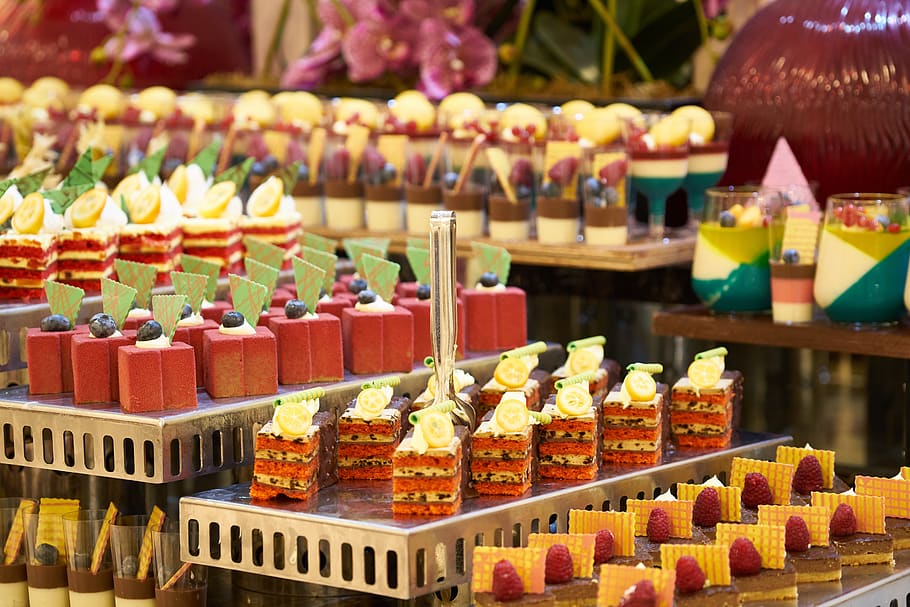Cakes, pastries, and other sweets are now part of nearly everyone’s daily diet. For many, puff pastries, muffins, and turnovers are breakfast staples, while some people always end their lunch and dinner on a sweet note by indulging in a slice of cake, pie, or tart.
Pastries are part of gatherings and celebrations, too. Birthdays, weddings, and anniversaries are not complete without a cake and other sweets.
With the popularity of pastries and sweets, now would be a good time to pursue your dream of becoming a baker and pastry chef and making a career out of these.
Getting a certificate in patisserie can help jumpstart your career as a pastry chef and baker. By taking up such a course, you will broaden your knowledge and skills in creating sweet and savory baked goods.
You will also be able to learn and master vital baking skills and techniques, which you need to come up with delectable baked sweets, pastries, and other types of desserts that people will love eating over and over again.
Key Baking Techniques to Master
While taking up a patisserie course, you will learn about and hone these basic and advanced baking techniques that you need to become a great baker and pastry chef:
1. Baking pan and tin preparation
Whether you are baking a cake, apple pie, or lemon tart, the last thing you want to happen is for your baked good to fall apart as you take it out of its container. You can avoid this time- and money-wasting annoying issue by learning how to prepare these wares before using them.
Below are some baking prep techniques you have to master while in culinary school and constantly apply whenever you bake:
- Placing a layer of baking paper or parchment paper over sheet pans or trays.
- Greasing sheets and pans with butter or shortening.
- Tracing the shape of the pan you will use for cakes and loaves onto baking or parchment paper, then rubbing the base, lining, and sides with butter.
- Using pre-cut paper or cut squares of baking paper and lining them in molds when baking muffins and cupcakes.
2. Rubbing-in
This technique is used when making bread, shortcrust pastry, and scones. You need to know how to do it properly to create baked goods that are tender yet not dry and crumbly.
Rubbing-in means using your fingertips to rub the butter into the flour until it begins to look like crumbs.
To do this correctly, use your fingertips to take the butter and flour from the bowl and rub them together lightly. Next, sprinkle the ingredients back into the container.
Sprinkle the ingredients as high as possible so you can incorporate more air into the final product.
Once you have combined the two ingredients thoroughly, they should resemble breadcrumbs.
3. Creaming
Creaming butter and sugar is another method that is used in baking. This technique allows you to incorporate more air into whatever you are baking, thereby making it fluffier and lighter.
To cream ingredients, you can use a food processor or a stand mixer with beaters.
One trick that you should never forget when creaming is to avoid using butter straight from the fridge. Soften or chop it into small pieces first so you can combine it with sugar easily.
To know if you have mixed the butter and sugar properly, the product should be fluffy and pale cream.
4. Folding
This technique calls for mixing ingredients, such as flour or whipped egg whites, by hand into a batter using a thin rubber spatula or a metal spoon without squashing the added elements.
To keep the batter light, divide the ingredients into three batches.
To start folding the ingredients, add the first batch to the batter. Next, cut down into the middle of the mixture and sweep the spatula or spoon around the side of the bowl. Scoop the batter up and bring it to the rim and fold it over the ingredients on the surface.
Give the bowl a half-turn every time you repeat this motion. Continue folding until all ingredients are well-blended. Follow the same steps when adding the remaining batches.
5. Melting chocolate
Chocolate is a key ingredient that you will add in different types of baked goods. Most of the time, you have to melt it first before incorporating it.
To melt chocolate properly, smash the pieces into small chunks, no more than one centimeter in size. You can then soften them using the microwave or stove.
If you use a microwave, put the chocolate in a microwave-safe bowl. Next, select the medium setting and heat the chocolate for 30 seconds, stirring it after it stops. Continue heating and stirring it every 30 seconds until the chocolate is glossy and smooth.
If you want to melt chocolate using the stovetop, put it in a saucepan and put it over low heat for around 30 seconds. Remove the pan from the heat and let it stand for a few minutes. Next, stir it and if it is not melting, keep putting it back on the stove over low heat for 15 seconds at a time.
Repeat the same process until the chocolate is glossy and smooth.
Whether you are using a microwave or stove, be careful with using high temperatures since both can cause the chocolate to split, rendering it unusable for your recipe.
6. Caramelizing sugar
Sugar is another primary ingredient in nearly all pastries and baked goods. It is also used in making candies and sauces for desserts.
And aside from using sugar as a raw ingredient, you will need to caramelize it if the recipe calls for it.
To caramelize sugar, you can use either the wet or dry method. The first technique calls for adding water to the granulated sugar to slow down the caramelization process. You can also incorporate lemon juice to help prevent recrystallization.
The dry method, which is the faster technique, entails melting the sugar in a saucepan over medium heat.
Regardless of which method you choose, you need to constantly keep an eye on and stir the sugar and place the bottom of the saucepan in ice water for about 10 seconds after you are done caramelizing it.
7. Piping
Lastly, piping refers to using a pastry or ziplock bag to force frosting or other paste-like mixtures through the tip for decorating cakes and pastries or creating special shapes.
Specially-designed pastry bags have piping tips that make doing this task and being more creative easier.
If you are using a ziplock bag, make sure you cut off a corner that is the right size. If it is too small, it will take longer to get the mixture out. But if it is too large, you will find it hard to control it.
A piping trick you have to remember is to use both your hands to squeeze the bag gently instead of pinching it from the front. This will result in a more even flow of the mixture.
If you want to be known for baking the best assortment of bread, cakes, and pastries and other desserts and make a career out of it, master these techniques and make the most of your patisserie course.
AUTHOR BIO:
Shanaaz Raja is the Course Director at International Centre for Culinary Arts – ICCA Dubai.

